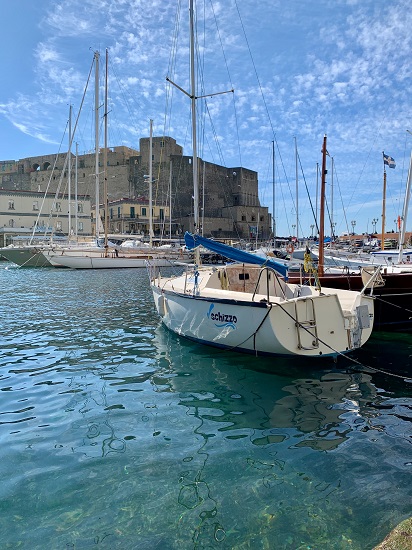Castel dell’Ovo
The Castel dell’Ovo is the perfect starting point for anyone visiting Naples for the first time. It’s always a great idea to start your itinerary in a new city through an iconic attraction. One that stands out from the list of the things you need to see and one that will put you in the “zone” of the local universe. After all, every city is like a small universe. Castel dell’Ovo sits on the waterfront right on the very first place that the ancient Greeks from the island of Evia chose as their new settlement.
It is also the place where according to the legend, siren Parthenope, distressed by her failed attempt to lure Odysseus has washed ashore after her suicide. Following the legend, the Greeks named their first settlement Parthenope. The little islet of Megaride was thus inhabited since the mid-seventh century BC.



During Roman times the little island was connected to the mainland and the Roman patrician Licinio Lucullo built a beautiful and elegant villa, the Castrum Lucullanum. The villa would house the magical arts of the Roman poet Virgil and his earthly remains, which were later mysteriously lost, and would also serve as a gilded cage for the last emperor of Rome, Romulus Augustus who was confined in the Valentinian bastion by the barbarian Odoacer.
At the end of the fifth century, the cenobite monks built their monastery on the island; while Saint Patricia of Naples having fled her uncle and emperor of the East found refuge here in the 7th century. The armies of Duke Sergio expelled the monks to set up a military garrison in the 9th century and it was here that Roger the Norman assembled his army finally where Robert d’Anjou erected the castle we more or less see today with strong square towers known as the “egg castle” (Castel dell’Ovo).



In the years that followed several important figures like the son of King Manfred of Swabia; the prince of Acaja; many Jacobins, Carbonari, and liberals. The name of the castle is not so much a reference to its shape but to another legend that talked about a magical egg hidden by Virgil (in the middle ages Virgil was not just a famous poet but also a great sorcerer) in the foundations of the fortress.
If the egg were to be broken, the city would suffer great catastrophes. Today the castle that was miraculously spared by the 20th-century degradation of urban planners and cement that completely eradicated the traces of Parthenope serves as an icon of Naples. The castle serves as a romantic backdrop for almost all tourists and many of the Neapolitans today and it is also the venue of several events, conferences, meetings, and exhibitions. It is also a place that offers a spectacular view of the Naples Gulf from the roof terrace and it has a free entrance.



